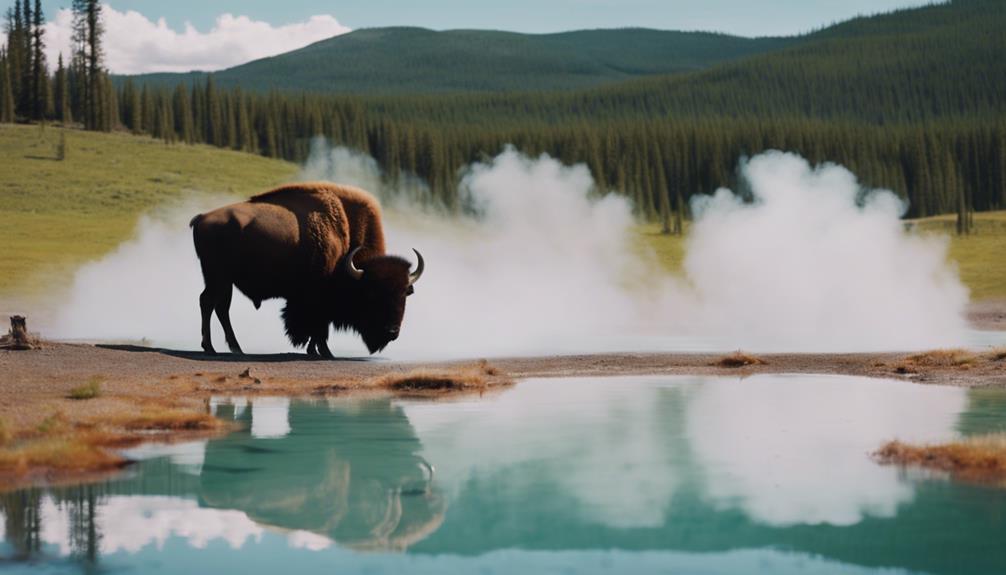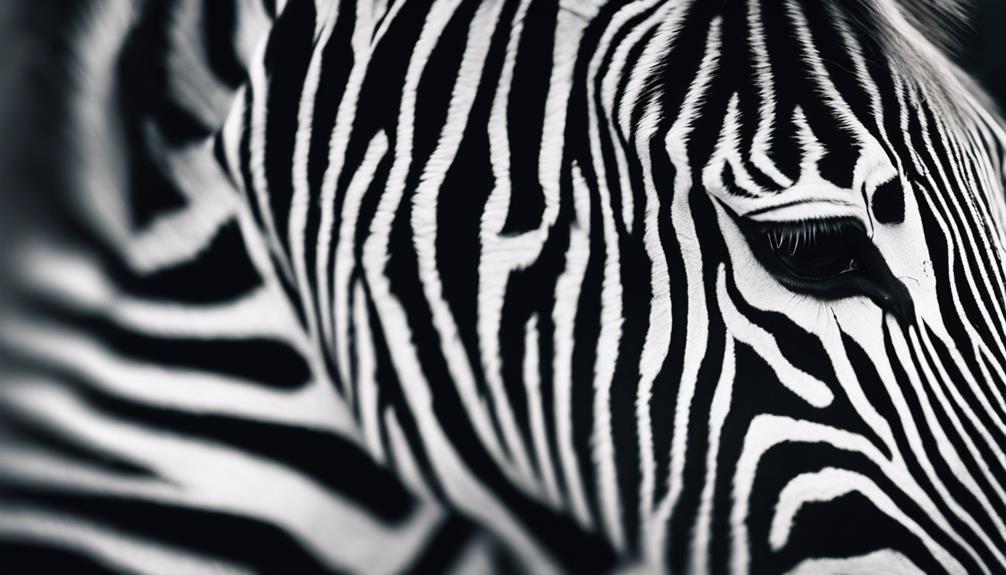Explore Yellowstone's hidden wonders! Witness the speedy grizzly bears roaming at 40 mph. Discover the historical importance of bison in Native American culture. Experience the successful return of wolves in 1995, now with 11 packs thriving. Encounter the only venomous snake, the prairie rattlesnake, crucial for biodiversity. Admire the majestic trumpeter swans with their impressive size. Immerse yourself in a vibrant ecosystem with 67 mammal species, 300 bird species, and over 1,000 plants. Yellowstone's secrets await, hinting at a world full of unique marvels and untold stories.
Speedy Grizzly Bears
When exploring Yellowstone's best-kept secrets, you'll be amazed by the speedy prowess of grizzly bears, clocking in at speeds of up to 40 mph. Despite their robust build, grizzly bears are not only powerful but also incredibly agile creatures. These majestic animals showcase impressive speed and agility, standing out as some of the most versatile predators in the wild.
Grizzly bears' ability to reach speeds of 40 mph highlights their exceptional agility and strength, allowing them to navigate various terrains with ease. Whether it's chasing down prey or swiftly moving through dense forests, these bears move with grace and power.
In addition to their remarkable speed, grizzly bears are also known for their swimming abilities, making them well-rounded predators. Emerging from hibernation in the spring, these bears exhibit a blend of strength, agility, and speed that is unmatched in the animal kingdom. Observing these creatures in their natural habitat is a true demonstration of their remarkable capabilities.
Historical Bison Significance
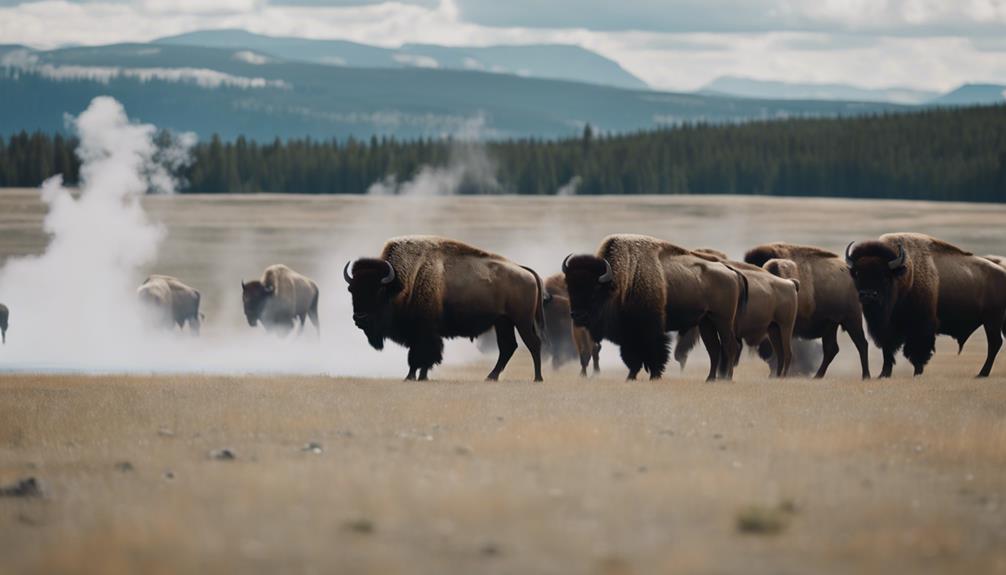
Did you know that bison have a deep-rooted historical significance in Yellowstone? They have been an essential part of Native American culture for centuries, serving as a symbol of strength and resilience. Despite facing a population decline in the past, ongoing conservation efforts have helped bison thrive once again in the park.
Bison in Native Culture
Centuries of reverence and reliance on bison by Native American tribes have woven a rich tapestry of cultural significance around these majestic creatures. Native American communities held bison in high regard for various reasons, such as:
- Providing Sustenance: Tribes like the Plains Indians depended on bison for sustenance, using every part of the animal for food, clothing, tools, and shelter.
- Spiritual Importance: Bison held deep spiritual significance and were central to many tribal ceremonies and traditions, symbolizing strength, resilience, and interconnectedness with nature.
- Impact of Near-Extinction: The near-extinction of bison in the late 1800s had severe consequences on Native American communities, disrupting cultural practices and traditional ways of life.
Bison Population Decline
Experiencing a significant decline in population, bison in Yellowstone have faced challenges that have shaped their historical significance in the park. These majestic creatures, present in Yellowstone for thousands of years, play a crucial role in the park's ecosystem as the only free-ranging bison population in the lower 48 states. Despite nearly facing extinction in 1902, conservation efforts have led to a remarkable population increase, with nearly 5,000 bison roaming Yellowstone in 2017. Their resilience is evident in their strong social structure, where they protect each other from predators. The bison's ability to overcome adversity and thrive showcases the successful recovery efforts and the importance of preserving these iconic animals in Yellowstone.
Bison Conservation Efforts
Conservation efforts have been instrumental in safeguarding the historical significance of bison in Yellowstone National Park. The bison population faced near-extinction in 1902, but thanks to conservation initiatives, their numbers rebounded to nearly 5,000 by 2017. This resurgence highlights the park's commitment to preserving the iconic bison and maintaining the delicate ecosystem they inhabit. Here are three key points about Bison Conservation Efforts in Yellowstone:
- Bison, with their unique behavior and strong social structure, play a crucial role in Yellowstone's ecosystem.
- Yellowstone is home to the only free-ranging bison population in the lower 48 states, emphasizing the park's dedication to wildlife protection.
- The historical significance of bison in Yellowstone underscores the importance of ongoing conservation efforts to secure their survival for future generations.
Successful Wolf Reintroduction
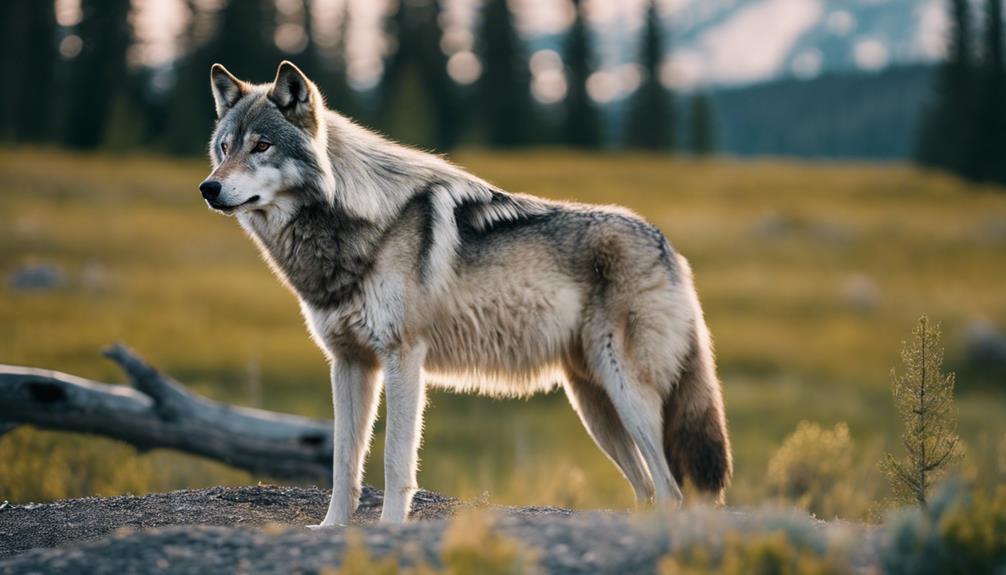
Let's uncover the fascinating story behind Yellowstone's successful wolf reintroduction, from their historical absence to the thriving wolf packs that now call the park home. Discover how reintroducing wolves has not only shaped the ecosystem but also influenced wildlife populations and ecological health in profound ways. Explore the various perspectives on this program, including its ecological impact assessment and the public's evolving perceptions of these majestic predators.
Wolf Reintroduction History
Yellowstone's successful wolf reintroduction history began in 1995 when 31 gray wolves were reintroduced from Canada after a gap of nearly 70 years without wolves in the park. The reintroduction effort saw the population of wolves in the Greater Yellowstone Ecosystem grow substantially, with over 100 resident wolves specifically in Yellowstone by 2015. Researchers were able to identify 11 distinct wolf packs within the park as a direct result of this successful program. This initiative not only restored balance to the ecosystem but also highlighted the crucial role of conservation efforts in preserving biodiversity and the natural heritage of Yellowstone.
Ecological Impact Assessment
Having a substantial impact on Yellowstone's ecosystem, the successful reintroduction of gray wolves in 1995 marked a pivotal moment in the park's ecological history. The reintroduction of 31 wolves from Canada led to a significant population increase, with over 500 wolves inhabiting the Greater Yellowstone Ecosystem by 2015. This growth resulted in the establishment of more than 100 resident wolves organized into 11 distinct packs, playing an essential role in maintaining a balanced ecosystem. The presence of wolves has positively influenced Yellowstone's biodiversity and ecosystem dynamics, contributing to the overall health of the park. Researchers diligently monitor the wolf population and their interactions within the park to gain a deeper understanding of their ecological role, ensuring the continued success of this crucial reintroduction initiative.
Public Perception Analysis
The successful reintroduction of gray wolves in 1995 brought about a notable shift in Yellowstone's ecosystem, sparking a change in public perception towards these majestic predators. Here are three key points to ponder regarding the public perception analysis following the wolf reintroduction:
- Positive Impact: The presence of gray wolves has been widely embraced by the public as a sign of ecological restoration and balance within Yellowstone National Park.
- Educational Opportunities: Observing wolf behavior in their natural habitat has led to increased public awareness about the importance of predators in maintaining healthy ecosystems.
- Conservation Support: The successful reintroduction of gray wolves stands as a significant conservation achievement, garnering increased support for wildlife preservation efforts in Yellowstone.
The return of gray wolves has without a doubt shaped how visitors and conservationists view these iconic animals and their role in the ecosystem.
Venomous Snake Species
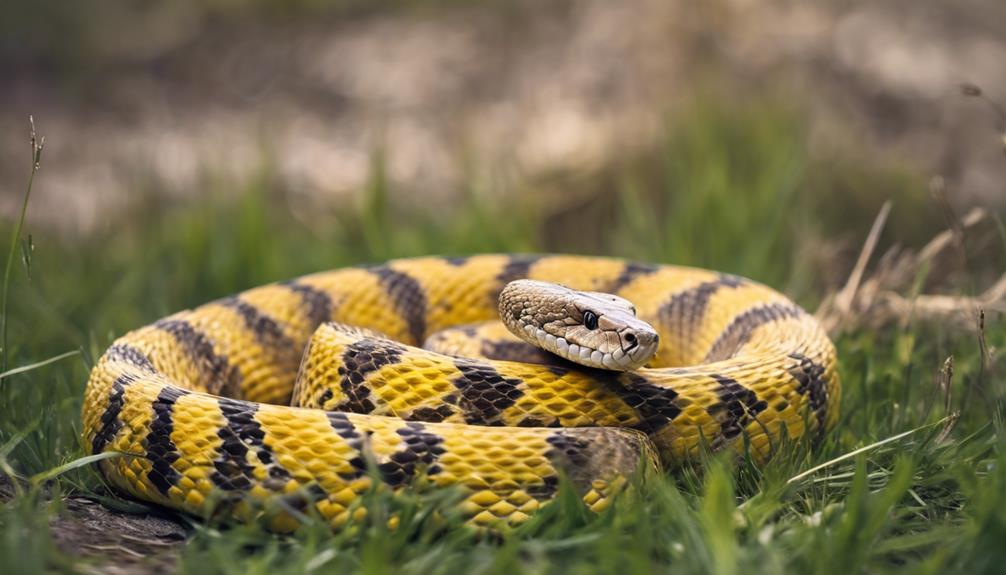
Explore the lone venomous snake species residing in Yellowstone's diverse ecosystem. Among the five snake species found in Yellowstone, the prairie rattlesnake stands out as the only venomous one. While encountering a venomous snake like the prairie rattlesnake may sound intimidating, it's important to note that they play a vital role in maintaining the park's biodiversity. These snakes help control rodent populations, contributing to the overall balance of the ecosystem. Yellowstone has only reported two prairie rattlesnake bites in its history, highlighting the peaceful coexistence between these snakes and park visitors. Understanding and respecting these creatures can enhance your wildlife exploration experiences in Yellowstone, allowing you to appreciate the intricate web of life within the park. So, if you happen to come across a prairie rattlesnake during your adventures, remember to admire them from a safe distance and marvel at their significance in this unique ecosystem.
Majestic Trumpeter Swans

As you explore Yellowstone, keep an eye out for the graceful trumpeter swans, the largest wild waterfowl in North America. These majestic birds boast an impressive wingspan of over eight feet, adding a touch of elegance to the park's diverse bird species. With their sensitivity to human disruptions, ensuring their privacy is key to witnessing these beautiful creatures thrive in their natural habitat.
Graceful White Beauties
Gracefully gliding across the serene waters of Yellowstone's pristine habitats are the majestic trumpeter swans, the largest wild waterfowl in North America. These graceful white beauties captivate with their impressive size and elegance. Here are three fascinating facts about these majestic birds:
- Impressive Size: Male trumpeter swans can weigh around 26 pounds, while females weigh about 22 pounds, making them a truly substantial bird species.
- Majestic Wingspan: Trumpeter swans boast an impressive wingspan exceeding eight feet, allowing them to soar gracefully through the skies of Yellowstone.
- Sensitive Creatures: Trumpeter swans are sensitive to human disturbances and require privacy in their habitat, making it essential to respect their space when observing these regal birds in Yellowstone National Park.
Habitat and Behavior
Nestled within Yellowstone's diverse landscapes, the majestic trumpeter swans exhibit distinct habitat preferences and behaviors that contribute to their regal presence in the park. As the largest wild waterfowl in North America, these graceful birds weigh around 26 pounds for males and 22 pounds for females, boasting an impressive wingspan exceeding eight feet. Trumpeter swans, sensitive to human disturbances, require privacy to thrive in their Yellowstone habitat. The park, home to 285 bird species with 150 nesting regularly, provides a sanctuary for these magnificent creatures. Observing their majestic presence as they glide across the waters of Yellowstone's serene lakes is a true reflection of their beauty and the importance of preserving their natural habitats.
Rich Biodiversity
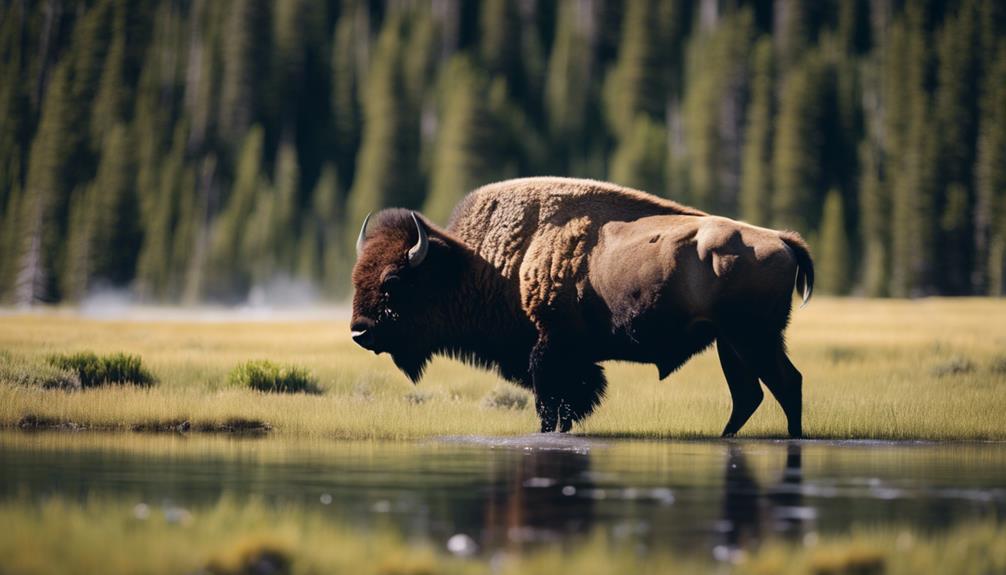
Teeming with a diverse array of wildlife, Yellowstone National Park boasts a rich biodiversity that captivates visitors from around the globe. The park's vibrant ecosystem is a haven for various mammal species, with 67 calling it home, including iconic creatures like bighorn sheep, grizzly bears, and wolves. Additionally, Yellowstone is a birdwatcher's paradise, hosting around 300 bird species, with 150 nesting regularly, adding a symphony of sounds to the park's natural orchestra. The flourishing landscape of Yellowstone is also adorned with over 1,000 species of native flowering plants, creating a colorful tapestry that not only delights the eye but also provides crucial resources for the park's wildlife inhabitants.
- Yellowstone is home to 67 mammal species, including bighorn sheep, grizzly bears, and wolves.
- The park hosts approximately 300 bird species, with 150 nesting regularly.
- Yellowstone contains over 1,000 species of native flowering plants, providing resources for wildlife.
Unique Ecosystem Insights
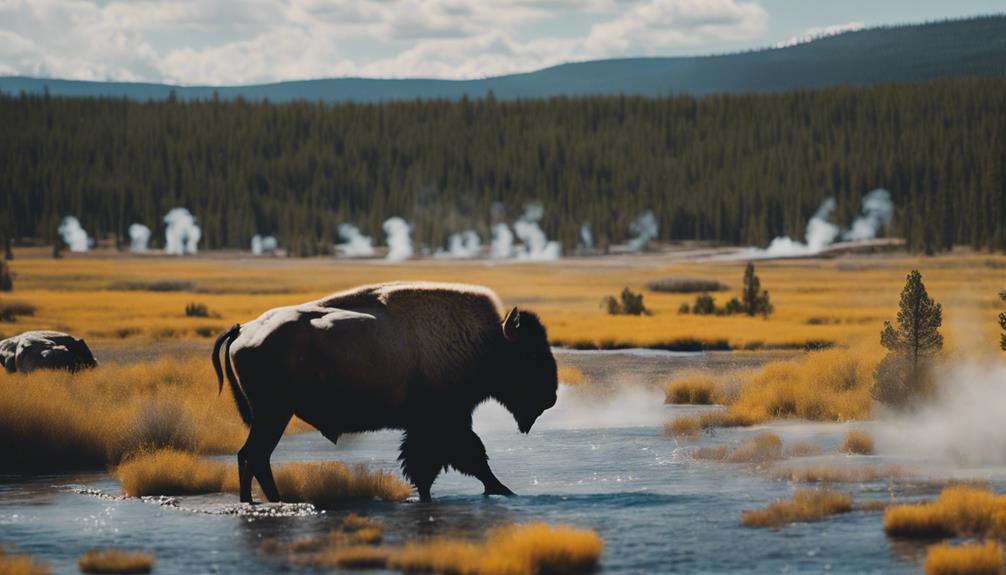
Reveal the hidden marvels of Yellowstone's ecosystem with a journey into its unique insights. Yellowstone Lake, one of the largest high-elevation lakes in North America, plays an essential role in the park's ecosystem. Its pristine waters support a variety of fish species and provide a habitat for numerous bird species, enriching the biodiversity of the area. The hydrothermal features, such as geysers and hot springs, are not only visually stunning but also contribute to the unique ecosystem by fostering microbial life that thrives in extreme conditions.
Explore the table below to uncover more fascinating facts about Yellowstone's ecosystem:
| Fun Facts | |
|---|---|
| Largest Concentration of Mammals | Diverse ecosystems for wildlife |
| 300 bird species | 290 waterfalls |
| 67 mammal species | 1,000+ native flowering plants |
| Grizzly bears, wolves, bighorn sheep | Essential resources for wildlife |
From the largest concentration of mammals in the lower 48 states to the abundance of native flowering plants, Yellowstone's ecosystem offers a wealth of discoveries waiting to be explored.
Wildlife Exploration Experience
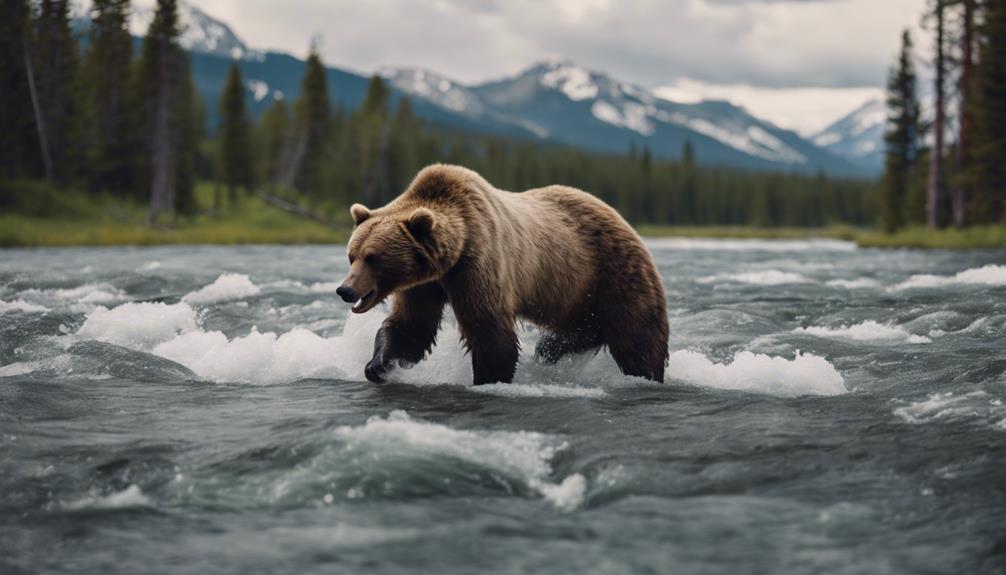
Commence an enthralling adventure through Yellowstone's diverse wildlife habitats to encounter a multitude of fascinating animal species. Yellowstone is a haven for birdwatching enthusiasts, boasting 285 bird species, with 150 nesting regularly, providing a vibrant and diverse birdwatching experience. Among the avian wonders, the majestic Trumpeter swans steal the show with their impressive wingspan exceeding eight feet. These largest wild waterfowl in North America, with males weighing around 26 pounds and females about 22 pounds, showcase their size and strength. However, these beautiful creatures are sensitive to human disturbances and require privacy, emphasizing the importance of wildlife conservation efforts in the region. Commence on a journey through Yellowstone to witness these diverse bird species in their natural habitats, appreciating the wonders of nature while contributing to the preservation of these remarkable creatures.
Wonders of Nature Unveiled
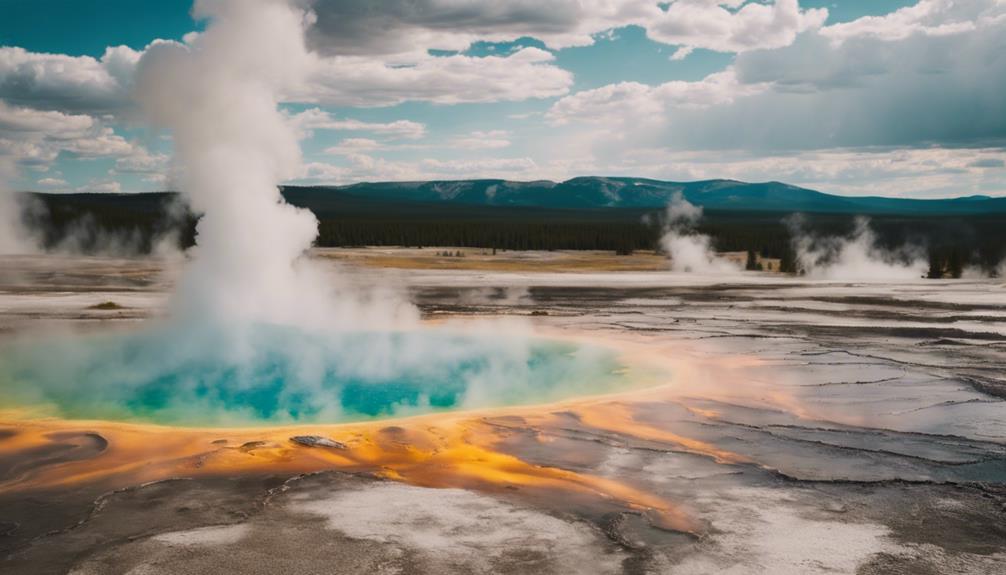
Begin a captivating journey through Yellowstone's natural marvels, revealing the park's stunning scenery and distinctive geological characteristics. Yellowstone National Park, nestled at an elevation of 7,733 feet, boasts a majestic crown – Yellowstone Lake, the highest in North America. But the park's wonders don't stop there. With over 10,000 hydrothermal features, including geysers, hot springs, mud pots, and fumaroles, Yellowstone is a geothermal paradise waiting to be explored.
Among these hydrothermal features, Old Faithful stands out as one of the park's over 500 active geysers, known for its predictable eruptions. Interestingly, its eruption interval has only increased by 30 minutes in the last 30 years. However, the geysers and thermal features in Yellowstone are in constant flux, with the intriguing possibility of Old Faithful ceasing its eruptions at some point in the future.
Moreover, Yellowstone is home to the largest concentration of mammals in the lower 48 states, offering diverse ecosystems for wildlife enthusiasts to marvel at. So, as you traverse this natural wonderland, keep your eyes peeled for the geysers, hot springs, and abundant wildlife that make Yellowstone truly exceptional.
Yellowstones Hidden Gems
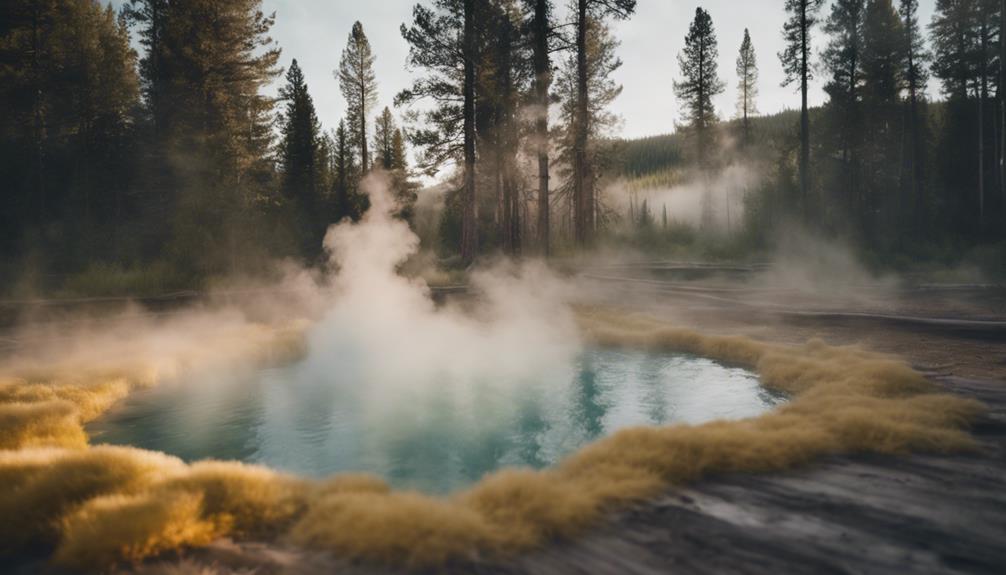
Discover Yellowstone's Hidden Gems, where untold stories and undiscovered wonders await your exploration in the heart of this iconic national park. Beneath its surface of breathtaking landscapes and abundant wildlife, Yellowstone holds secrets that add layers of intrigue to its history.
- Military Management: For three decades, the First United States Cavalry's Company M patrolled Yellowstone, safeguarding it from poachers and souvenir hunters. Their presence added a unique chapter to the park's narrative, showcasing a different side of its protection and preservation efforts.
- Mysterious Disappearance: The enigmatic vanishing of L.R. Piper at Lower Geyser Basins Fountain Hotel in 1900 remains a puzzle to this day, shrouding the location in an air of mystery and intrigue. Exploring this area might reveal clues to this unsolved case, offering a glimpse into Yellowstone's past.
- Geological Wonders: With over 300 waterfalls, 10,000 hydrothermal features, and nearly 500 geysers, Yellowstone's geological marvels astound visitors, highlighting the park's diverse and enthralling natural beauty. Investigate these wonders to witness the raw power and beauty of Yellowstone's geological landscape.
Conclusion
As you contemplate Yellowstone's well-hidden mysteries, you can't help but admire the amazing variety and splendor of this national gem. From the swift grizzly bears to the grand trumpeter swans, each revelation exposes a fresh level of awe and thrill. So next time you visit Yellowstone, remember to venture beyond the apparent and discover the concealed treasures that make this place truly exceptional. Who knows what incredible surprises you'll come across next!
